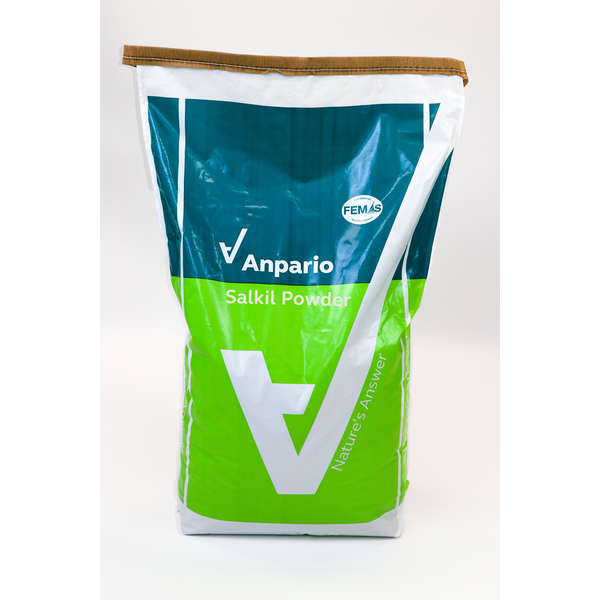SALKIL kills Gram-negative bacteria (Salmonella, Campylobacteria and E. coli) during the storage and feeding of feed, the number of pathogens involved in feed is reduced.
Poultry SALKIL: in carriers of active ingredients to the large intestine and the cecum over the hood and the small intestine (these are the places in which the above-mentioned bacteria accumulate and where they multiply rapidly, the pH of the colon is optimal for them.).
SALKIL helps maintain a suitable pH in the intestine to reduce harmful bacteria and help the intestines to resist the pathogens' attacks.
In brief
• Low consumption of 2-4 kg / tonne.
• Raisins (granules) are easy to mix with feed.
• Not corrosive like organic acids alone.
• Start working immediately after mixing with feed.
In experiments, 90-95% of the salmonella and more than 90% of Campylobacteria were destroyed 24 hours after dosing.
• Works both in feed and in the intestine.
• Do not reduce feediness.
Salkyl can be used to assure the biosecurity of fodder mills, e.g. Salmonella, Escherichia coli and Campylobacteria.
1. Raw material handling
To avoid contamination during stocking, raw materials such as meat and fish meal can be treated with Salki at 4 kg / ton.
2. Processing of fodder
The rehumil can be treated after normal cleaning by mixing, for example, 100 kg of Salix to 100 kg of wheat bran and the like, and driving the mixture through the mill. This is to ensure that all holes and surfaces are treated with a strong Salkyl mixture and the risk of contamination is reduced. Handling must be done at least once a month. If the structure of the mill is old-fashioned or Salmonella control is very important it can be done weekly. Processing can be carried out weekly, eg at the beginning and end of production. The mixture can be packed after treatment and used as a 50% strength Salkyl.
3. Processing
Rehumillas have several sites susceptible to colonization of Salmonella and other bacteria. In some mills, 0.5 kg of Salkyl can be added directly to a mixer, etc., or to a stock of the finished product. The substance is allowed to pass through the mill to prevent bacterial contamination by the treatment of critical points.
4. Processing of feedstocks
Feeding tanks may warm up during daytime and cool down at night, whereby moisture is condensed in the container. Moisture improves mold growth, molds release carbon dioxide and water which further allows bacterial growth. The problem described above can be solved by adding Salkyl to a blow pipe or screw conveyor before filling the tank. When filling the feed container, Salkyl covers the inner surface of the container and adheres to contaminated sites where the molds have previously grown.
Recommended operating volumes depend, among other things, the size of the feed container in relation to the area.
recommendations:
Feed capacity over 30,000 kg -> Salkyl 12 kg
Feed capacity up to 15,000 kg -> Salkyl 6 kg
Feed capacity up to 7 500 kg -> Salkyl 3 kg
Salix has been used to control Salmonella, Escherichia and Campylobacter, but it is also
very effective against vegetative cells of fungi and mildew. Salkyl does not corrode the surfaces.
